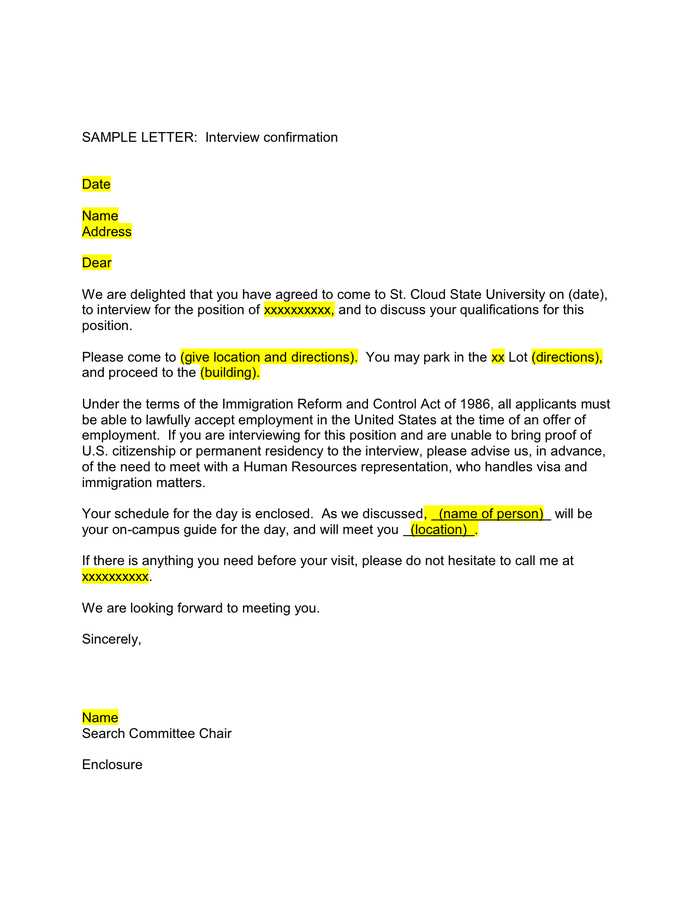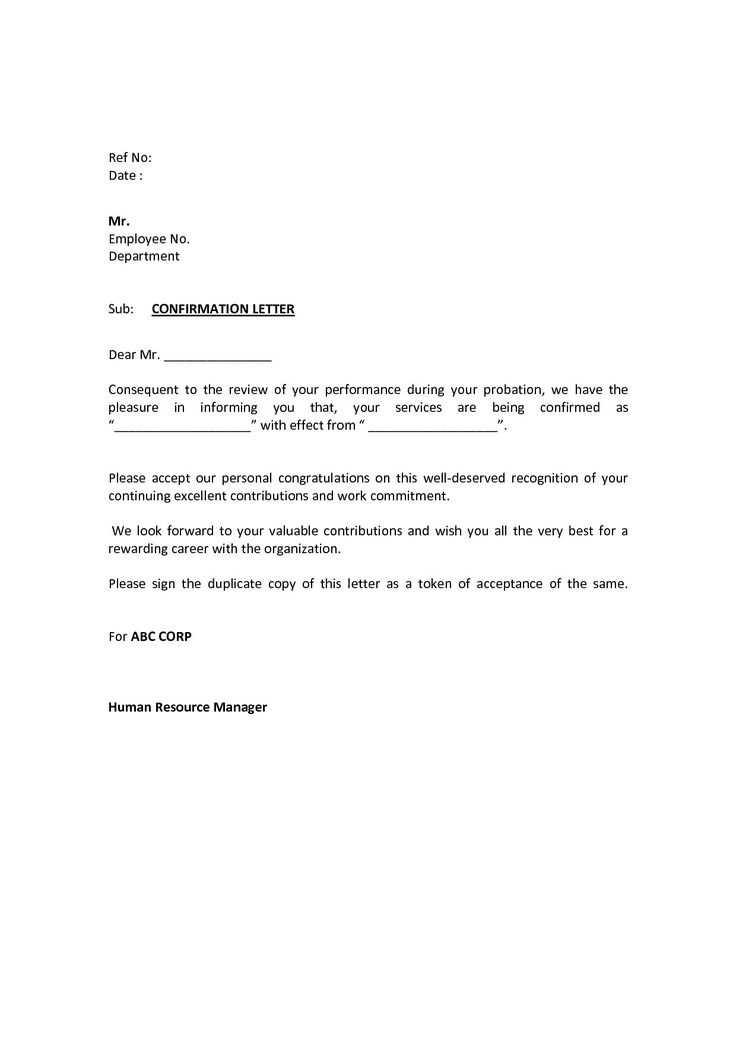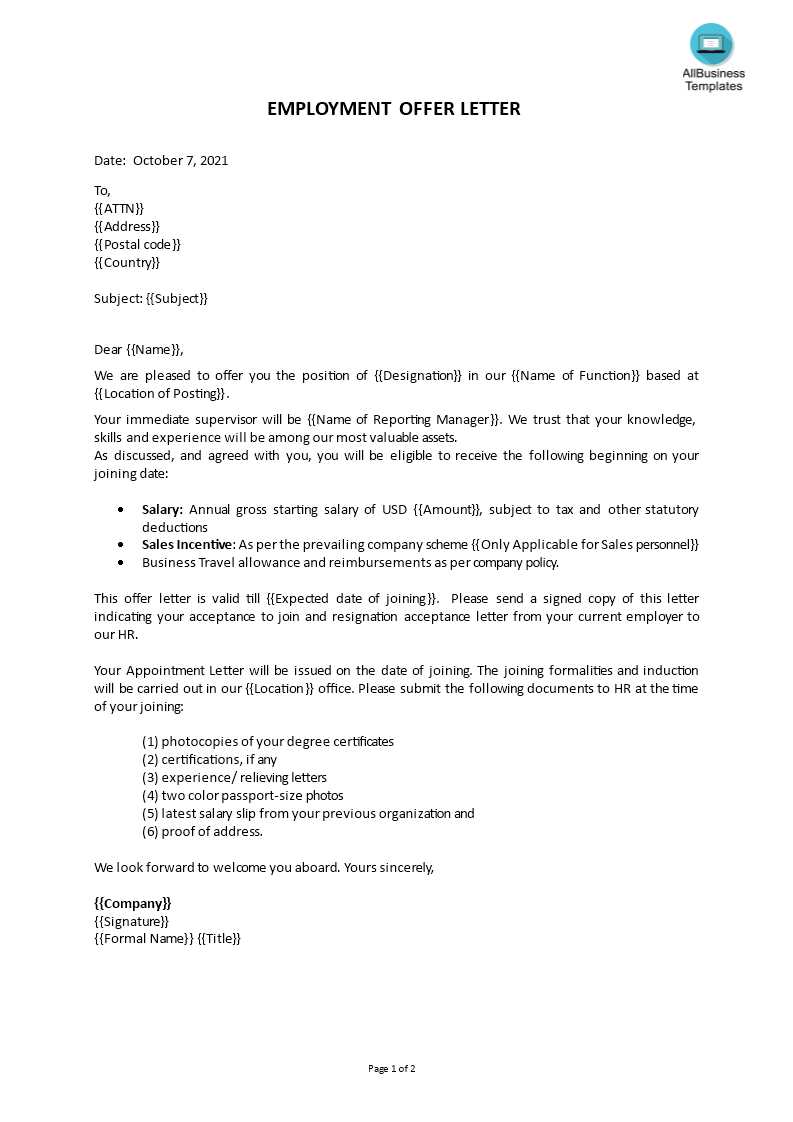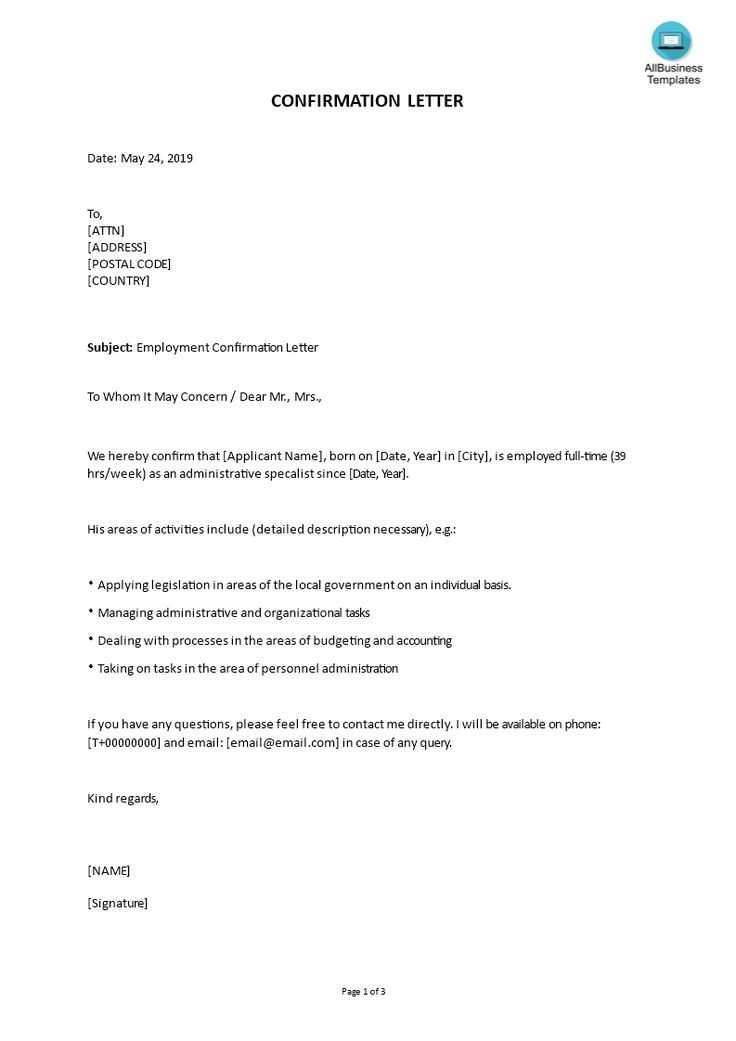Probation Confirmation Letter Template for Effective Communication

In any professional setting, confirming the successful completion of an evaluation period is an essential step in managing employees. These documents serve to formalize the transition from a trial phase to a full-time role, ensuring that both the employer and employee are aligned on expectations moving forward.
Crafting a clear and professional communication for this purpose is crucial for maintaining a positive relationship between the employer and the employee. A well-written document can outline key achievements, areas for growth, and the future trajectory of the employee within the company.
When constructing such a document, it is important to focus on structure and tone. The content should reflect the professionalism of the organization while providing the employee with the clarity they need regarding their performance and status within the company. Precision and clarity are essential for a smooth transition from probationary terms to permanent employment.
What is a Probation Confirmation Letter
This document serves as a formal statement from an employer that marks the successful conclusion of an employee’s initial assessment period. It indicates the transition from temporary or trial employment to permanent status, confirming that the individual has met the required standards for continued employment.
Purpose of the Document
The main purpose of this communication is to provide clarity to both the employer and the employee. It formalizes the end of the evaluation phase, highlighting the employee’s performance and the decision regarding their ongoing role within the organization. This document is an essential part of the employment process as it sets clear expectations for the future.
Key Elements Included
Understanding Its Purpose in Employment
The purpose of this official document is to mark the end of an initial evaluation period and confirm that the individual has met the necessary requirements to continue with the company. It is a critical step in the employee-employer relationship, as it ensures both parties have a mutual understanding of the employee’s performance and status within the organization.
Clarity and Transparency
Such a document serves to clearly outline the outcome of the assessment period. By providing this communication, the employer ensures transparency, offering feedback on the employee’s performance while reinforcing expectations moving forward. This reduces uncertainty and fosters a positive work environment.
Establishing Future Expectations
By formally recognizing the completion of the initial employment phase, this document sets a foundation for future collaboration. It may include a summary of strengths and areas for improvement, as well as any further steps or goals for the employee’s development within the company.
| Aspect | Details |
|---|---|
| Performance Evaluation | Provides feedback on the employee’s skills and work during the assessment phase. |
| Next Steps | Clarifies future responsibilities, goals, and expectations for continued employment. |
| Employment Status | Confirms the transition from temporary to permanent employment based on performance. |
Essential Components of the Letter
This type of formal communication should include several key elements to ensure that it serves its purpose effectively. A well-structured document provides clarity, reinforces expectations, and strengthens the professional relationship between the employer and the employee. It’s important to include specific details that reflect both the evaluation process and the decision to continue the working relationship.
Introduction and Context

The opening section should provide context for the communication, stating the purpose and referencing the evaluation period. It’s important to acknowledge the timeframe and outline the purpose of the document, ensuring that the employee understands the purpose of this formal communication.
Performance Overview and Decision
One of the central components of this document is a clear assessment of the employee’s performance during the trial phase. It should summarize strengths, areas for improvement, and any feedback that will guide future development. Finally, it should clearly state the decision regarding continued employment and any future goals or expectations moving forward.
Key Information to Include

For such formal documents to be effective, it is essential to include specific details that make the communication clear and comprehensive. These key elements ensure that both the employer and employee are aligned on the outcome of the evaluation period and the steps moving forward. The information should be concise yet thorough to avoid any misunderstandings.
First, the document should specify the employee’s job role, the duration of the assessment period, and the overall purpose of the communication. It’s also crucial to outline any performance feedback, focusing on the employee’s strengths and areas that may require further development. Finally, the document should clearly state the decision about the employee’s future with the organization and any expectations or goals for their next phase of employment.
Step-by-Step Guide to Writing the Letter
Creating this type of formal communication requires a structured approach to ensure that all necessary information is included while maintaining a professional tone. By following a clear process, employers can produce a document that effectively communicates the decision and expectations while also fostering a positive relationship with the employee.
1. Begin with the Opening Statement

The first step is to introduce the purpose of the communication. This should include a brief mention of the evaluation period and an acknowledgment of the employee’s performance. The tone should be positive and professional, setting the stage for the feedback that will follow.
2. Provide a Performance Review
The next step is to offer a concise overview of the employee’s performance during the assessment period. Highlight key achievements, strengths, and areas that may need further improvement. Be specific and objective to provide useful feedback that guides future progress.
Finally, clearly state the decision regarding the employee’s continued employment with the company, along with any expectations for their next steps. Make sure to conclude the communication on a positive note, reinforcing confidence in the employee’s ability to succeed going forward.
Practical Tips for Crafting the Document
Writing a professional and clear document that formalizes the conclusion of an evaluation period is crucial for maintaining a positive working relationship. It ensures that both the employer and employee have a mutual understanding of performance and expectations moving forward. Below are some practical tips to make the writing process smoother and more effective.
- Keep It Professional: Ensure that the tone is formal and respectful. This document represents an official record of the employee’s status within the organization.
- Be Clear and Concise: Avoid unnecessary jargon or lengthy explanations. Focus on key points and make sure the document is easy to understand.
- Include Specific Feedback: Offer constructive feedback on the employee’s strengths and areas for growth. This will provide clarity on why the decision was made.
- Use a Positive Tone: Even if there are areas that need improvement, frame them as opportunities for growth and development rather than negative points.
- Outline Next Steps: Clearly mention any goals or expectations for the future. This helps guide the employee and provides direction for the next phase of their role.
- Proofread for Accuracy: Before sending, review the document for any errors or unclear statements to ensure professionalism and clarity.
By following these tips, you can craft a document that is not only effective in conveying important information but also strengthens the relationship with the employee and fosters a positive workplace environment.
Common Pitfalls in Writing Confirmation Letters
While drafting official communications to confirm an employee’s status after an evaluation period, certain mistakes can undermine the document’s effectiveness. It’s crucial to avoid these common pitfalls to ensure the message is professional, clear, and serves its intended purpose. Below are some frequent errors that should be avoided during the writing process.
1. Lack of Specificity
One of the most common issues is being too vague in the communication. It’s important to provide specific feedback on the employee’s performance. General statements like “You did well” or “You need improvement” are not helpful and may leave the employee uncertain about their standing. Be clear about what was successful and where further work is needed.
2. Using a Negative Tone
Another mistake is focusing too much on negative aspects or presenting feedback in a way that can demotivate the employee. Even when pointing out areas for improvement, it’s essential to do so constructively and positively. The goal is to maintain a supportive tone that encourages growth rather than discouragement.
Avoiding these common pitfalls ensures that the communication remains professional, transparent, and motivating for the employee, thus contributing to a positive working relationship moving forward.
Avoid Mistakes for Clear Communication
Effective communication in official documents is crucial for maintaining a positive and transparent relationship with employees. Mistakes can create confusion and lead to misunderstandings, which can affect the overall work environment. To avoid these issues, it is important to be mindful of several key practices that ensure clarity and precision in your communication.
1. Be Direct and Precise
Avoid ambiguity in your message. Instead of using vague terms, make sure the content is straightforward and specific. Clearly outline the purpose of the communication, the results of the evaluation, and the decision regarding the employee’s future status.
- Instead of “you did well,” say “your performance in meeting targets was excellent.”
- Instead of “we expect improvement,” say “we expect measurable progress in project management skills over the next quarter.”
2. Avoid Overly Complex Language
It’s important to keep the language simple and understandable. Overly technical or complex vocabulary may confuse the recipient and obscure the meaning. Aim for a professional but accessible tone, focusing on clarity rather than sounding formal or complex.
- Use clear and simple phrases, like “We are happy with your work” rather than “We acknowledge your contributions with favorable regard.”
- Stick to concise sentences to avoid overwhelming the reader with too much information at once.
By avoiding these mistakes, you can ensure that your communication is clear, direct, and professional, promoting mutual understanding between you and the employee.